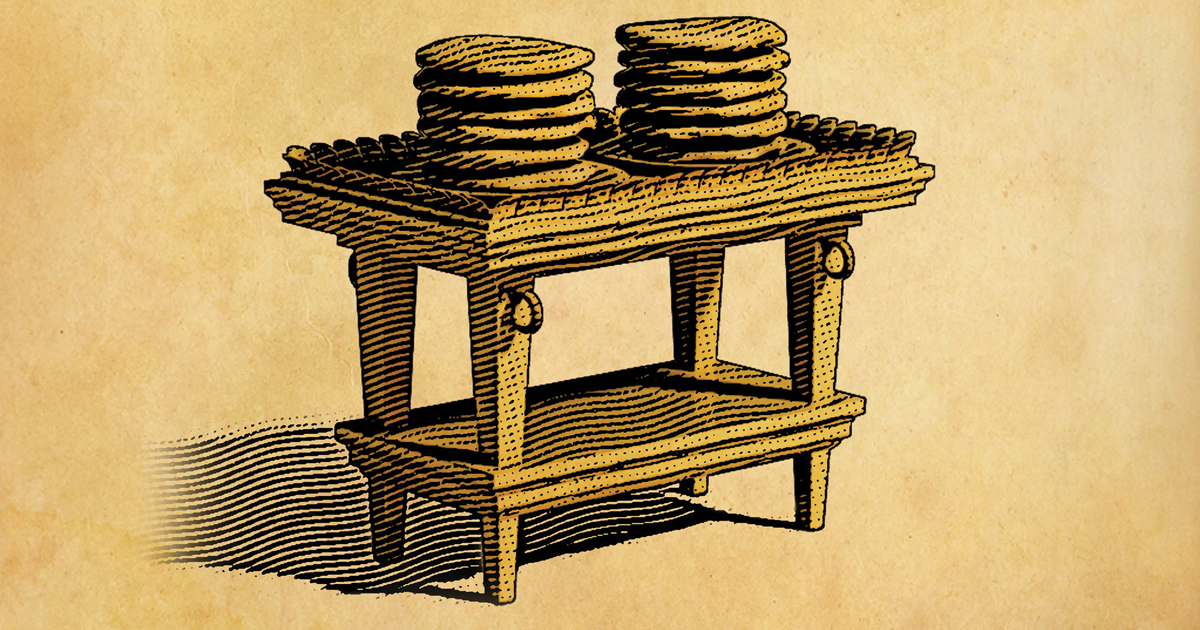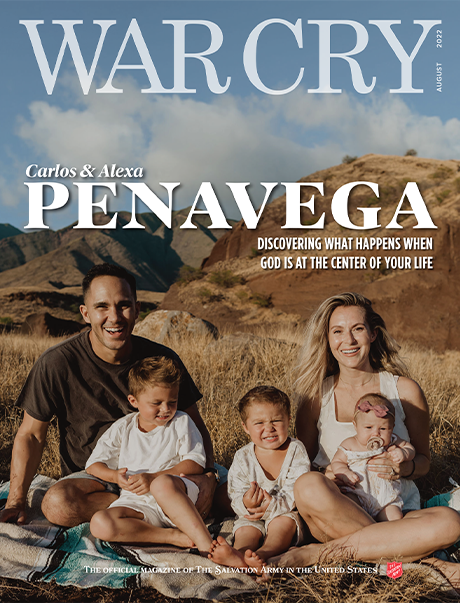The Table of Showbread
Christ is the bread of life.
The first time a priest stepped into the Holy Place, it took away his breath. Light from the flickering candles from the Golden Lampstand caused the gold on it to gleam, the Altar of Incense and the Table of Showbread. The gold-wrapped walls added to the beauty, and as his eyes adjusted, he could see the detail in the rich tapestry of the veil that separated the Holy Place from the Holy of Holies. On his right was the Table of Showbread, three feet long, a foot and a–half wide, standing a little less than two and a–half feet tall.
With the Table of Showbread, we have the first use of the word “table” in the Bible. It was made of acacia wood overlaid with gold. Acacia trees grew in the desert, their wood highly resistant to decay, considered the hardiest of stock. The wood was covered in gold. The Hebrew word for gold means to “shimmer” and gold represents God’s divinity. In Bible symbolism, the wood stands for the humanity of Christ, the gold His divine nature. This is a recurring theme throughout the Tabernacle.
The Showbread was made of fine flour. Major David Laeger in his book, Shadow and Substance, gives a beautiful description of why the bread is further emblematic of Christ:
Before the showbread was wrought by the hands of men for placement in the Sanctuary; it was the “grain of wheat” sown, grown, scythed, winnowed, crushed, sifted, kneaded, formed, baked, and presented before the Lord on the golden table. Now it is the Incarnate Lord, virgin born, perfectly grown, seasonably scythed, relentlessly winnowed, brutally crushed, submissively sifted, enigmatically enduring the kneading of judgment, fulfilling humiliation for our sins in the form of a slave through the fiery sentence of His cross.
On the table, 12 loaves were stacked in two piles. These represented the entirety of Israel as represented by the 12 tribes, but more importantly, God’s desire to have fellowship with the entire human race. Each tribe was responsible to bake one loaf each week to be presented to the priests to place on the table. The offerings amounted to about 75 pounds of bread a week. Further, the bread was most likely unleavened bread. In the Old Testament, leaven represents sin because it permeates the loaf, causing it to puff up as sin does to an individual. Because of this, leaven was banned from the Tabernacle.
The baking of the bread was certainly a task the priests could have done themselves, but it was important for God’s people to contribute something to the life and worship of God. The tribes brought the bread as an offering, small but important. Just so, our offerings are not just about supporting the church or some special cause, but because God wants us to contribute as an act of worship. The size does not matter as much as the heartfelt faithfulness to give what God requires.
A fascinating twist was the sprinkling of frankincense on the loaves. The aroma of the frankincense would fill the Holy Place with a fragrance akin to balsam wood. It was made from a whitish gum resin. What powder was not sprinkled on the loaves was burned on the Altar of Incense. (The frankincense is not the same as the incense burned on the Altar of Incense, to be studied in the September issue of War Cry.) The frankincense represented the fragrance of Christ’s life found in the gentleness of His character, the compassion that touched the untouchable and healed the hopeless, that loved to the cross and then burst upon the world at the Resurrection.
After the Showbread had been on the table for a week, it was replaced by fresh loaves. The old bread was eaten by the priests in the Holy Place—not a crumb was to leave there. This is a reflection that we feed on Christ, our Lord, in His presence. Fortunately, we are not restricted to a small room as were the priests, but there is a sense that unless we seek His presence, we cannot feed upon Him. We are not hooked up to some heavenly IV tube that constantly feeds us, nor are we able to move about without taking time to stop, to seek Him, to feed upon Him for our nourishment and strength.
Jesus spoke very clearly about this, proclaiming, “‘I am the bread of life. Whoever comes to Me will never be hungry again’” (John 6:35). Not only is Christ the perfect bread, but there is no end to His supply to meet our need. With William Williams we sing our need –
Guide me, O Thou great Jehovah,
The Song Book of The Salvation Army #27
Pilgrim through this barren land;
I am weak, but Thou art mighty;
Hold me with Thy powerful hand;
Bread of heaven, Bread of heaven,
Feed me till I want no more,
Feed me till I want no more.
This article was published in the December 2017 issue of The War Cry.







